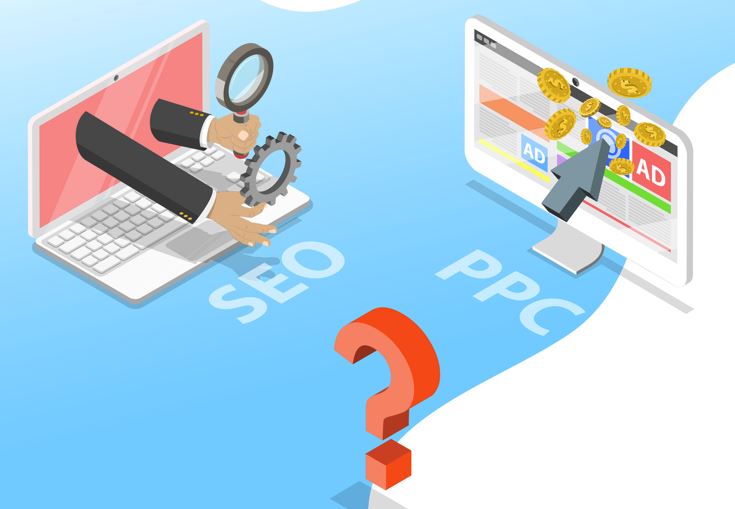It wasn’t long ago that the success of any contracting business, regardless of the specific trade, was built on word of mouth and referrals.
Those remain an integral part of this highly people-oriented business. However, with increased competition and a consumer base shopping for everything online, the game is changing.
It’s not enough to maintain your business with those old-school referrals and favorable word of mouth. You must actively pursue new clientele.
To do so successfully requires a lot more exposure and an aggressive plan to expand your digital marketing.
Let’s jump into our ultimate guide to contractor marketing with six approaches you can take to increase your reach, attract new customers, and grow your business.
Contractor Marketing Web Design
We’ll discuss plenty of contractor marketing topics below – SEO, social media, Google My Business – but your company website may prove your single most crucial piece of contractor marketing.
It’s your online storefront. Your brand’s digital window to the rest of the world. Or at the very least, the city or region your services cover.
And your web design is critical.
Nearly every person who might consider you for a job will view your website at some point in their decision-making process.
Even the ones referred by word of mouth will check out your online presence before employing your services.
You need to make that first digital impression count.
The two most critical elements of your website are user experience and functionality.
Your website is equal parts resource and tool – the central hub around which all of your other marketing efforts will revolve.
A dynamic website that promotes direct engagement with both current clients and future customers is a foundation for success.
Fully-formed sites should feature all of the following:
- A responsive design that looks spectacular on any device, but especially mobile devices
- Extremely fast load times
- Secure browsing and data and information collection
- Real-time scheduling
- Online payment options with various methods of payment accepted
- Easy or direct access to customer service channels
- Relevant, information-rich content such as video and blog posts
Additionally, you want to offer your users an online experience that’s easy to navigate and compels them to learn more about your services and take action by emailing, calling, or contacting you or completing a form via the website.
But, you also need those customers to find your website. You achieve that with search engine optimization (SEO) optimization.
SEO
Every month, there are close to 1.8 million searches for contractor services. When looking at high-demand services such as plumbers or home construction, that number more than doubles.
It’s a fact of our digital lives, when someone needs a service, they start the search for that service online. And most often, they begin their research on Google.
With that in mind, it’s more important than ever to leverage Google’s ranking factors by investing in SEO.
However, ranking at the top of Google’s search engine results page (SERP) requires a well thought out SEO strategy.
It’s more than just a few well-placed keywords and a mobile-friendly website, though both of those certainly help. A winning SEO strategy includes:
- A mobile-first website that loads quickly
- Reliable web hosting so your site is always “live”
- A website that possesses relevant, high-quality content for your consumer base
- Proper keyword optimization, including the terms and phrases that would-be customers are most likely to search for when finding your services (including local search terms)
- Ensure your website is structurally sound and that images, tags, and page URLs are optimized and in concert with Google’s search algorithm
- Your content features high-value links to other pages on your site and external sites that are respected, with highly trafficked pages
- Taking advantage of the rise of local searches, including claiming your Google My Business listing (see below)
A fully formed SEO strategy results in more than a high ranking on Google’s main SERP page (which consumers rarely look beyond after the initial search).
SEO allows you to reach a larger audience of individuals searching for the specific services your firm offers. More than raising your profile, the quality of those leads will improve.
You should realize that SEO is constantly evolving. For your company to rank at the top of Google’s SERP takes time, effort, and plenty of tweaks to your SEO strategy.
However, simply having a strategy and regularly focusing your efforts to leverage Google’s algorithm in your favor will put you at an advantage over much of your competition.
Advertising
A commitment to SEO ensures the long-term health of your company’s online marketing efforts. Sometimes, though, a more direct path is necessary to increase your online presence and grow your revenue.
That’s where pay-per-click (PPC) or Google Ads plays a critical, supplemental role in reaching your customers.
PPC ads are those you often see at the top or bottom or to the right of Google’s organic search results (always marked with a small ad symbol). Offering a more direct path to those who are seeking out your services, PPC provides you the following advantages:
- Financial flexibility as you can spend as much or as little on your specific campaigns each month
- You can target your PPC ads to your desired audiences and set up measurable data points to gauge the effectiveness of your campaign
- There is also an element of customization to your paid advertising that is lacking in the organic search
- PPC also provides a quicker pathway to leads and conversions than SEO, which takes time to establish your online presence and make an impact
For PPC to prove most effective, you will need to manage your campaigns and nurture your leads. A few more tips to maximize your investment include:
- Be wise about your targeted keywords and consider the words and phrases a consumer is using to find your services
- Instead of linking your ads to your website, employ the use of targeted landing pages to drive up your engagement; get your leads in your sales funnel faster and with fewer distractions
- Design your campaigns in accordance with your territorial reach; service area is a big deal with contractor related searches, and the more localized you can make your campaigns, the greater success you’ll have
PPC isn’t a cure-all. A solid SEO strategy is critical for your company’s long-term success. However, PPC is excellent at filling in the gaps or quickly driving up engagement numbers in a relatively short amount of time.
![The Ultimate Guide to Contractor Marketing [Updated 2024] 5 marketing-plan-sample](https://johnsonjonesgroup.com/wp-content/uploads/2023/09/marketing-plan-sample-6558270.png)
Find Out How We Can Help Grow Your Business
Let’s discuss your marketing needs, and we’ll help you put together a digital marketing strategy that will generate more leads and save you time.
Social Media
Contractor marketing through social media is the ultimate solution to direct consumer engagement.
Think about it. There’s no barrier between you and a would-be customer. Even better, there’s no barrier between satisfied clients and their network of social connections.
Social media platforms, such as Facebook, Instagram, LinkedIn, Pinterest, Twitter, or YouTube, broaden your company’s online exposure. By sharing your blog posts, photos, videos, and client testimonials, you can drive traffic to your site.
These organic platforms open you up to new audiences and new methods for earning their business. (A few old methods, too, such as the extremely powerful Facebook Ads platform.)
To engage on social media means to drop any pretense and position your company more matter-of-factly. That’s not a bad thing, as users are looking for authenticity.
Not necessarily trying to sell your services, but provide a showcase for what you and your team have accomplished and what that means for others with similar needs.
Establish a profile on a few platforms to get started – ones that lend themselves to your business philosophy and the audience with whom you’re trying to connect.
For example, Facebook is an ideal starting point, no matter your specialty or target audience. If yours is a B2C contracting firm, additional accounts with Instagram or Pinterest will have a considerable impact. B2B companies may find a lot of value with LinkedIn.
Those who understand the power of video, be it walkthroughs, time-elapse, how-tos – will find a willing audience on YouTube, regardless of clientele. This can be one of the most effective contractor marketing efforts you can make.
In a similar manner to SEO, your social media marketing does take time and effort to expand your presence. Also, like SEO, the ability to connect with current and future customers on a more organic level is invaluable.
Sales Automation
Once your contractor marketing strategies begin hitting their stride, it results in a wealth of new prospects and leads. This can prove both good and bad.
The positive side is that with more successful marketing comes a business – your business – on an upward trajectory. More prospects mean more clients, more jobs, and ultimately higher revenues.
The downside is that all of that hard-earned new business comes with the need to nurture those leads. Whether it’s a single job, series of projects, or a long-term or ongoing commitment, you don’t want to lose your growing customer base because you were unprepared to manage it.
You can, however, automate much of the sales process through a customer relationship management (CRM) platform.
The primary benefits of a CRM include:
- Improved organization and tracking your incoming leads
- Streamlining the duties of your sales reps, increasing their productivity and ability to spend more time with clients
- Increasing engagement and reducing response time to both potential and current clients
- Automation of tedious or repetitive tasks
- Avoidance of leads being overlooked or ignored
- Promoting more direct engagement with customers on their terms and at a time they want to engage
As with any form of automation, marketing, sales, or otherwise, it’s a fine line between automating too much or not enough. The best CRM platforms allow you to draw the line at the point that best fits your company’s (and your client’s) needs.
You choose the processes to automate – contact and follow-up, email marketing, lead nurturing, outreach, proposals and contracts, reporting, sales, scheduling – and those that retain a more direct approach to servicing your clients in the best way you see fit.
Google My Business
Finally, we close our list with a more recent addition to the online marketing tool kit – local marketing channels.
One of the most critical elements to growing your contractor business is capturing the attention of potential clients at both a local (region or city) and hyper-local (specific suburbs or communities) level.
Your Google My Business listed is designed to do precisely that.
When someone searches for local contractors, the first thing they see on Google’s SERP page after the initial set of paid listings are Google My Business listings. Accompanied by a map, these free listings show up before the top organic search results. That’s prime Google real estate.
What effectively amounts to a mini-website for your company, the Google My Business listing is often the first thing a would-be client sees of your brand – even before they navigate to your website.
To make the most of this free listing, you’ll want to complete your entire profile with the service. In addition to your firm’s basic information, the listing allows you to add photos, post updates or offers, cultivate reviews (and respond to them), and optimize for SEO.
In particular, seek out reviews and testimonials from your satisfied client base. Google My Business (as well as social media platforms) tap in the recent (and increasingly more important) phenomena of social proof.
Potential clients don’t just want to hear you sell them on your accomplishments, they want to discover it from actual clients. The more honest and positive testimonials you can generate, the better.
Perhaps the best part about your Google My Business listing is it doesn’t take long to claim yours and set it up. You could be up and running your contractor marketing in less than a week – and at no cost to you.
Final Thoughts
Contractor marketing is about connecting with your potential clients on their terms, and through the channels they’re most comfortable using. That means engaging online, mainly through your content-rich website and social media.
For a contractor looking to expand beyond the narrow scope of word-of-mouth advertising, the best approach is to adopt a comprehensive digital marketing strategy.
Hope you enjoyed this piece on contractor marketing, let us know in the comments





